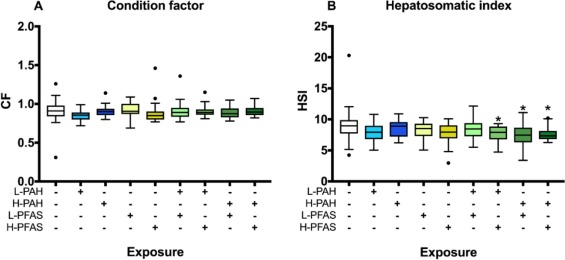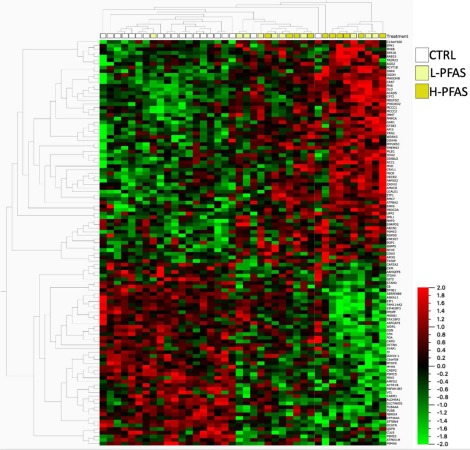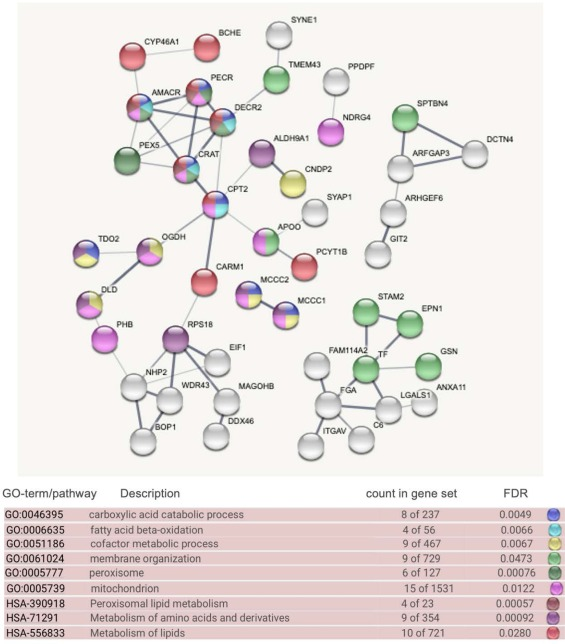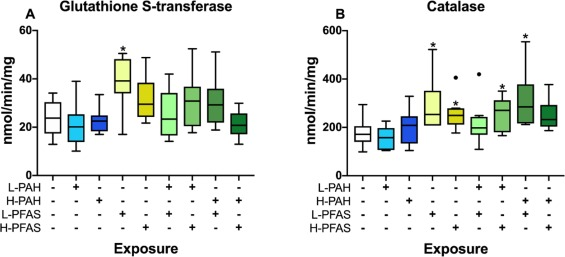Multi-Omics Joint Analysis: Proteomics and Lipidomics Reveal the Impact of Environmental Pollution on Atlantic Cod
The marine environment is under continuous pollution pressure, not only from offshore operations like oil and gas but also from a large number of land-based pollution sources, including industrial and agricultural activities and sewage discharge. Two abundant environmental pollutants include polycyclic aromatic hydrocarbons (PAHs) and perfluoroalkyl substances (PFASs). PAHs and PFASs have been detected in marine organisms, including several fish species and marine mammals. Toxic effects, such as developmental toxicity, behavioral abnormalities, and reproductive system damage, have been observed when several bony fish were exposed to PAHs and PFASs. Research on how PAHs and PFASs exert toxicity when combined is still scarce.
In environmental toxicology, biomarkers are used as sensitive early warning signals of chemical exposure. Common biomarkers of PAH exposure include cytochrome P450 1A (Cyp1a) induced by activation of the aryl hydrocarbon receptor (Ahr), the formation of DNA adducts and DNA fragmentation, and the accumulation of PAH metabolites in bile. Specific biomarkers for PFAS exposure are not yet clear; evaluating changes in antioxidant enzyme activity, energy metabolism, and DNA homeostasis in liver tissues can provide valuable information on PFAS toxicity. Hence, high-throughput methods like proteomics and lipidomics can help to elucidate the mechanisms of toxicity and offer potential biomarkers for PFAS exposure.
Atlantic cod (Gadus morhua) is increasingly used as a model organism in environmental toxicology. The aim of this study is to investigate the biological responses of Atlantic cod exposed to environmentally relevant mixtures of PAHs and PFASs. The low-dose mixture in the study is based on reported concentrations of PAHs and PFASs in the liver of wild Atlantic cod, and the high-dose mixture is twenty times the concentration of the low dose (20x). To confirm exposure, accumulated PFASs were measured in cod liver, and PAH metabolites were measured in bile. Proteomics analysis of liver samples was conducted to study changes in the liver proteome, and lipidomics analysis of liver microsomal components was performed to study changes in lipid metabolism. Additionally, biological responses such as DNA fragmentation, oxidative stress, and endocrine disruption were evaluated in leukocytes.

s2
Journal: Aquatic Toxicology
Impact Factor: 4.344
Publication Date: August 2020
Article Link: https://www.sciencedirect.com/science/article/pii/S0166445X20303404
Abstract
The purpose of this study was to investigate the biological responses of Atlantic cod (Gadus morhua) to defined mixtures of polycyclic aromatic hydrocarbons (PAHs) and perfluoroalkyl substances (PFASs) at environmentally relevant low doses (1×= L) or high doses (20×= H). A two-week in vitro experiment was conducted, with cultured juvenile cod exposed via intraperitoneal injection on day 0 and day 7. A total of 10 groups of fish samples (n = 21-22): two control groups, four single PAH and PFAS mixture (L, H) exposure groups, and four PAH and PFAS combined (L / L, H / L, L / H, H / H) groups. Body burden analysis confirmed dose-dependent accumulation of PFASs in cod liver and PAH metabolites in bile. For the three PAH/PFAS combined exposure groups (L-PAH / H-PFAS, H-PAH / L-PFAS, H-PAH / H-PFAS), the hepatosomatic index (HSI) significantly decreased. Proteomics analysis of the liver suggested that pathways related to lipid degradation were greatly affected by PFAS exposure, including upregulation of enzymes in the fatty acid degradation pathway, such as fatty acid β-oxidation. In the H-PFAS exposure group, the increase in abundance of enzymes in lipid catabolism pathways paralleled the reduction in triacylglycerols (TGs) content, indicating that PFAS increased lipid catabolism in Atlantic cod. PFAS exposure also induced oxidative stress markers, including catalase and glutathione S-transferase activity. Only minor and non-significant differences were found between exposure and control groups for cyp1a and acox1 gene expression, plasma vitellogenin concentration, Cyp1a protein synthesis, and DNA fragmentation. In conclusion, the researchers combined proteomics and lipidomics analyses to suggest that PFAS may disrupt lipid homeostasis in Atlantic cod.
Main Results
Fulton's condition factor (CF) and hepatosomatic index (HSI) are parameters showing growth performance. When comparing CF between control and exposure groups, no significant difference was found; however, the HSI was significantly decreased (p <0.05) in the L-PAH / H-PFAS, H-PAH / L-PFAS, and H-PAH / H-PFAS groups compared to the control group. In liver proteomics, for PFAS groups, a comparison between control and exposure groups (L-PFAS and H-PFAS, p = 0.005, q-value <0.125) used the first 111 differentially expressed proteins for hierarchical clustering, with many proteins in the L-PFAS and H-PFAS groups showing similar expression characteristics, indicating a dose-response trend in the data. Pathway and network analysis of the first 111 differentially expressed proteins (p = 0.005, q-value <0.125) identified significantly enriched pathways mainly related to energy metabolism, particularly peroxisomal and mitochondrial lipid catabolism pathways, also associated with amino acid metabolic pathways and processes. Gene enrichment analysis identified a significantly enriched pathway, FATTY_ACID_METABOLISM, which includes upregulation of several enzymes in the fatty acid degradation pathway (e.g., fatty acid β-oxidation). Lipidomics analysis of liver microsomal components identified 130 lipids belonging to 9 different lipid subfamilies. When comparing the lipid profiles in the liver of different exposure groups with the control group (Fig. S8), only the H-PFAS group showed significant differences, with some TGs relatively reduced and some phospholipids correspondingly increased. The study also found that exposure to PAH alone did not affect the activity of Cat and Gst, while the L-PFAS group significantly (p <0.05) induced the activity of both enzymes. For cyp1a and acox1 gene expression, plasma vitellogenin concentration, Cyp1a protein synthesis, and DNA fragmentation, little or no effects were observed.

Growth Performance of Atlantic Cod Exposed to PAHs and PFASs

Bicluster Analysis of Differentially Expressed Proteins in the Liver of Cod Exposed to L-PFAS and H-PFAS Compared to Control

STRING Interaction Network of 76 Differentially Expressed Proteins in the Liver of Cod from L-PFAS and H-PFAS Groups

Gst and Cat Activity in the Liver of Atlantic Cod Exposed to PAHs and PFASs
Biotech Company Betapack offers multi-omics integration analysis services, including joint analysis of proteomics and lipidomics.
We welcome teachers interested to contact us!
Related Services
Integration Analysis of Lipidomics and Proteomics
Multi-omics Integration Analysis
Proteomics
Lipid Metabolomics Research
How to order?





